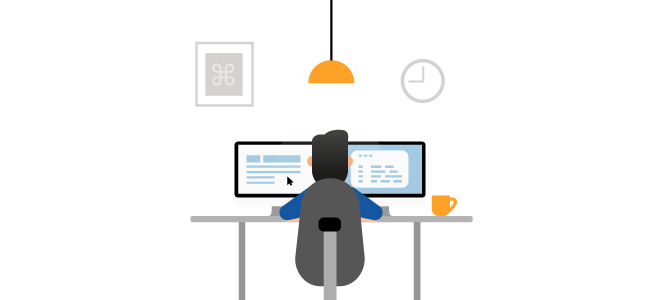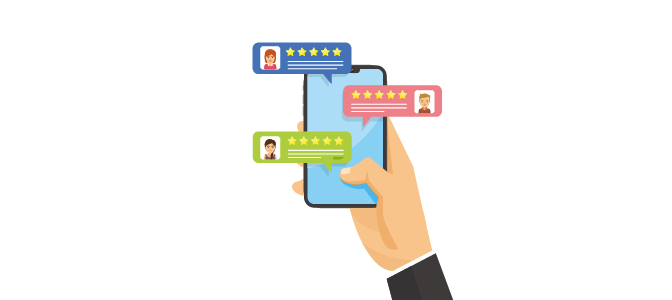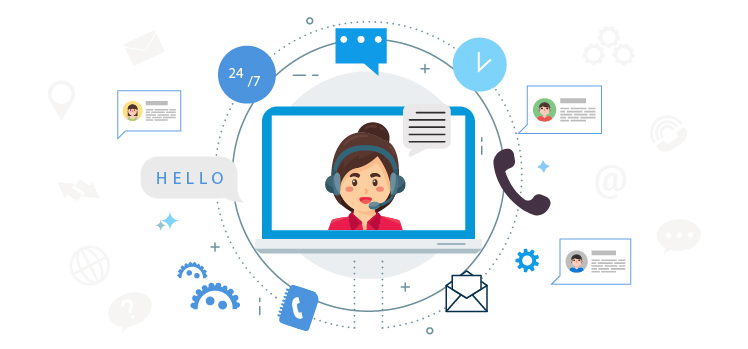15 best practices for improving customer support with help desk software
If you run a business that provides customer support through a help desk software solution, you may struggle with certain aspects of the support process. Providing great customer support is essential to maintaining a satisfied customer base. When customers have issues, it’s your responsibility to resolve them as quickly and efficiently as possible.
Here are 15 best practices for improving your help desk efforts to increase the quality of your customer support presence.
1. Use the right software

First things first, you need to have a powerful help desk system in place to provide great customer support. The best systems automate the vast majority of processes involved in managing a customer support team. This dramatically reduces the amount of manual administrative work involved, which frees up loads of time that reps can then devote to one-on-one interactions with customers.
Many small and growing businesses are moving to an all-in-one CRM, such as Agile CRM, because they provide help desk features built into the core CRM solution. This means that all the data coming from customer support is visible by everyone else in the company, which aligns teams and ensures everyone has the same insight into the issues customers are facing.
2. Hire top talent
It’s tempting to hire lower-level employees and train them because you can pay them less. But there are a few drawbacks to doing that:
- You often hire an inexperienced support rep, only to see them leave in a year after you have trained them. Essentially you are training them for their next job.
- When a rep leaves after a short period of time, you have to hire someone to replace them. This is a long process, leaves gaps in your team, and costs you the resources involved in training another new employee.
- When you hire top talent, you know that your team can deliver world-class support, which raises customer satisfaction. That is not the case when you hire inexperienced reps.
It’s worth the extra cost of hiring the best, most experienced support reps you can find. It will increase customer satisfaction and brand loyalty. Plus, it will reduce customer churn. This is important because it costs five times more to acquire a new customer than to retain an existing one.
3. Use automated ticket routing
With a powerful help desk system, you can automate the routing of incoming tickets in any way that you want. For example, if a ticket comes in from a customer that has submitted tickets in the past, you can set up an automation to route that ticket to the same rep that helped that customer previously.
Providing customers with support from the same rep every time allows them to form a relationship that expedites the resolution process. Plus, that rep will be familiar with the customer’s past issues and will be able to solve the problem faster.
4. Leverage dedicated help desk groups
Dedicated help desk groups are groups of support reps that specialize in certain areas. Let’s say you sell three products. You can have three dedicated support groups—one for each product. They are specialists in that product and can solve issues faster than if they provide support for all three products.
When a ticket comes in for Product A, the system can automatically send it to someone in the group that focuses on that product. This results in faster ticket resolution times and more satisfied customers, as they don’t have to wait for an inexperienced rep to escalate the ticket.
5. Label your tickets

Create ticket labels that represent common problems that customers have, the type of company that the customer submitting the ticket works for, etc. You can create a tag for any attribute you want.
This helps you filter and analyze tickets with similar attributes. It saves loads of time in manually searching for tickets around a certain issue. You can search for tickets with a particular tag and all tickets with that tag appear in the results.
6. Develop canned responses
Canned responses are pre-drafted emails that are automatically sent to customers who ask very common questions. Generally, the resolution to that problem will be the same. Canned responses save your team the hassle of having to draft that same response over and over. Again, saving significant amounts of time.
7. Incorporate service level agreements
Service level agreements (SLAs) lay out the terms and conditions of your customer support efforts. They are contracts between you and your customers. They stipulate things like the maximum amount of time a customer will have to wait for a response on a submitted ticket.
Incorporating them into your help desk process gives customers peace of mind and generates trust because they know what to expect and that you have agreed to abide by that. It also helps maintain accountability among your team, as you can easily view who is breaking SLAs. This allows you to identify low performers and help them improve their efforts.
8. Ensure your team isn’t overloaded
If your team has a huge backlog of pending tickets, it’s an indication that you need to hire more support reps. It’s worth the investment because it will improve customer satisfaction, which reduces turnover and saves you money in the long run.
When reps are overloaded they rush through tickets, are stressed out, and are more likely to be curt or impolite to customers. Happy reps who are not overloaded and stressed out will deliver a better customer experience, which will build loyalty and trust in your brand.
9. Ask for feedback

Your customers’ feedback is critically important to improving your customer support process. Send short online surveys after each ticket has been resolved to ask what you could do to provide better support.
Then, make sure to implement changes based on their feedback. Otherwise, collecting feedback is pointless.
10. Offer multiple channels for customers to reach you
Your customers vary, and so do their preferences and habits. Some like to submit support tickets via email, while others prefer calling via telephone, submitting a ticket via live chat, or asking questions on social media.
Be sure to offer as many help desk channels as possible so that customers can submit tickets in the way they prefer. This will keep customers happy because it sends the message that you care about their experience with your company.
11. Develop an extensive knowledge base
Having a knowledge base on your website significantly increases the productivity of your support team. Customers can search the knowledge base for answers to basic questions, allowing them to help themselves and solve their own problems in less time.
Every customer who solves their own problem by searching your knowledge base and implementing the advice in the article they find is one less support ticket your team must handle.
12. Ensure your employees are satisfied
As I mentioned above, stressed out employees deliver a sub-par support experience. You must find a way to keep them happy and motivated, so they stay at the top of their game.
You can do this by ensuring you have enough reps to minimize your ticket backlog. You can also implement employee engagement programs, such as employee volunteering events or matching gift programs.
These programs build comradery among your reps and help them feel part of the team, rather than isolated. All of this leads to happier, more motivated employees who will care more about their job and strive to deliver better support.
13. Focus on increasing first contact resolution
First contact resolution (FCR) refers to resolving a ticket on the first try, without having to search for an answer and get back to the customer. When customers have to wait hours or days for a resolution, it decreases trust and satisfaction.
Dedicated help desk groups increase your FCR rate. And maintaining a high FCR rate is important because 77% of customers say that valuing their time is the most important thing you can do to deliver excellent service.
14. Follow up on closed cases
Once you resolve a case, make a point to reach out to that customer a few days later to ask them if the resolution has fully solved their issue. It’s just a quick email, which can be automated as a canned response.
Following up illustrates to customers that you genuinely care about their success using your product and that they have everything they need to do so. It’s a great tactic for building brand loyalty.
15. Measure your team’s efforts
You should always measure the efforts of your help desk team. A solid all-in-one CRM provides extensive customer support analytics that you can evaluate to find weak links in the chain and make improvements where needed.
Measure metrics like ticket backlog, the average time to resolve issues, which reps are taking longer to close tickets, and so on. With this insight, you can continually improve your customer support presence.
Conclusion
A world-class customer support experience is key to maintaining high levels of customer satisfaction. It’s all interrelated. You provide a better support experience, and that builds brand loyalty and trust. It also can create brand advocates.
All of that adds up to higher levels of customer satisfaction, which reduces churn and ensures a reliable, recurring revenue stream. Follow the tips above, and you’ll be well on your way to improving your customer support presence and reputation. And all of that means increased revenue and faster business growth.

6 Comments
lalubhaitravels.com
about 6 years agoHi there every one, here every person is sharing these kinds of familiarity, thus it's fastidious to read this website, and I used to visit this website every day.
ReplyGabriel Swain
about 6 years agoThanks for the comment. We hope you keep reading every week as we post new articles. Cheers!
Reply2019 Calendar USA
about 6 years agoI am really grateful to the owner of this site who has shared this fantastic piece of writing at at this time.
ReplyGabriel Swain
about 6 years agoThanks so much for the positive reinforcement. We aim to educate and hopefully you're getting useful information from the blog. Thanks for commenting and best of luck with your efforts!
ReplyJonathan Clerk
about 6 years agoThanks so much for the positive reinforcement. Great write on best-practices-for-improving-customer-support-with-help-desk-software with this topic we can have a great understanding regarding Help-desk software and more.
ReplyGabriel Swain
about 6 years agoThanks for the positive feedback and for providing your input--much appreciated!
Reply